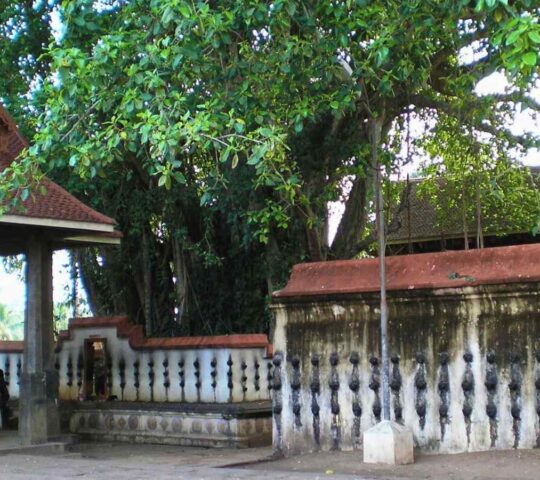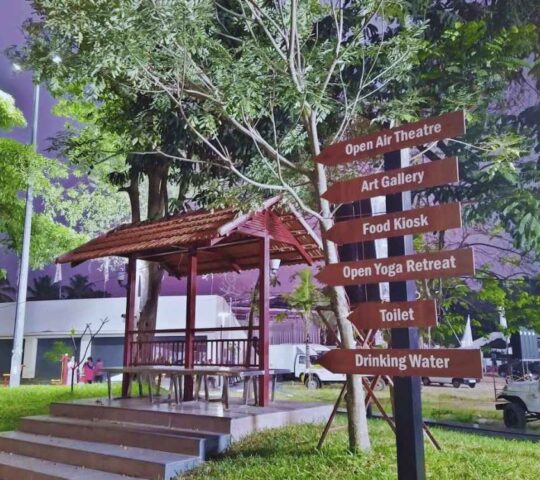Sree Padmanabhaswamy Temple
Hightlight
-
 Car parking
Car parking
-
 Non smoking
Non smoking
The Sree Padmanabhaswamy Temple, situated within the historic East Fort in Thiruvananthapuram, Kerala, is one of India’s most revered and iconic spiritual landmarks. Dedicated to Lord Vishnu, the temple showcases an architectural blend of Kerala and Dravidian styles, characterized by a towering gopuram and intricate stonework. Its spiritual significance, immense wealth, and deep historical roots make it a cultural cornerstone of the region. Thiruvananthapuram takes its name from the temple’s presiding deity—“Ananta”—translating to “City of Lord Ananta.”
A Temple of Spiritual and Historical Grandeur
Thought to have origins dating back to the 8th century, the Sree Padmanabhaswamy Temple is one of the 108 Divya Desams—sacred abodes of Vishnu praised in the hymns of the Tamil Alvars. The principal deity, Lord Vishnu, is depicted in a rare reclining pose on the hooded serpent Anantha, spanning across three sanctum doors. This unique depiction attracts thousands of devotees and tourists alike.
The idol itself is a remarkable 18 feet long and made of 12,008 salagramams brought from the Gandaki River in Nepal. The Ottakkal Mandapam, a platform in front of the sanctum, is carved from a single slab of stone and is another highlight of the temple’s architecture. Inside, the walls are adorned with stunning murals and paintings that depict deities such as Lord Ganapati, Gaja Lakshmi, and Narasimha Swamy.
Legends associate the temple site with the sage Divakara Muni, and references to the temple appear in ancient scriptures like the Skanda Purana and Padma Purana. It is believed to be one of the seven Parasurama Kshetras and sits beside Padma Theertham, a sacred water tank.
The current structure of the temple is largely attributed to Marthanda Varma, the esteemed ruler of Travancore, who undertook renovations in the 18th century. He also dedicated the kingdom to Lord Padmanabha and adopted the title “Padmanabha Dasa.” The temple continues to be managed by a trust led by the royal family of Travancore.
In 2011, international headlines were made when subterranean vaults beneath the temple revealed treasures worth billions, catapulting the temple to global fame as the world’s richest.
The temple continues to host vibrant rituals and festivals, including the Murajapam—a rare ceremony held every six years involving continuous chanting—and bi-annual festivals like Aipasi and Panguni, complete with traditional processions and Kathakali performances in the temple’s nataka sala.
Visitor Information
Situated in East Fort, Thiruvananthapuram, the temple welcomes devotees daily from 3:30 AM to 12:00 PM and again from 5:00 PM to 8:30 PM. Special darshan tickets are available at the temple counter: INR 50 for quicker entry and INR 500 for VIP darshan with prasadam.
Entry is strictly restricted to Hindus, and a traditional dress code is enforced. Men must wear a dhoti and be bare-chested, while women must wear a saree or ankle-length skirt with a blouse. No electronic devices are allowed inside, but facilities are available to safely deposit belongings.
The best time to visit is early morning to avoid crowds and to experience a serene darshan. The temple is well-connected via road, rail, and air, with Trivandrum International Airport and the central railway station just a short distance away. Popular nearby attractions include the Kuthira Malika, the Napier Museum, and the scenic Shanghumugham Beach.
FAQ's
Entry Fee for Sree Padmanabhaswamy Temple
There is no entry fee for The Sree Padmanabhaswamy Temple
Best Time to Visit Sree Padmanabhaswamy Temple
One can visit Sree Padmanabhaswamy Temple anytime throughout the year. If you would like to avoid the humid summer, the best time to visit Sree Padmanabhaswamy Temple would be from September to March.
Things to Do at Sree Padmanabhaswamy Temple
Religious activities, Enjoy the architecture, Visit temples nearby, local food, Explore Trivandrum City, etc.
How to Reach the Sree Padmanabha swamy Temple
Reaching the Sree Padmanabhaswamy Temple is very easy as the airport and railway station are very close. One can take a bus, autorickshaw, or a taxi to reach the temple.





